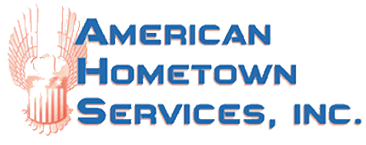Generally appearing awful and unsanitary as well as trigger allergies and negatively impact your overall health, mold is detrimental in any home. Being it difficult to find, mold thrives in darker places, requires moisture, and feeds well on dust. The top common mold likely to be discovered growing in homes is what we at American Hometown Services would like to share today.
Mold Identification
1) Alternaria: As a common mold that is among the top typical mold types found, the Alternaria is appears a greenish or brownish velvet-like texture. For a significant amount of time and on most surfaces, it can filter into the air ducts but is likely to grow in areas where water running through. It will likely grow in areas where water running through for a significant amount of time and on most surfaces, it can filter into the air ducts
2) Mucor: Due to the increased threat it poses, it is better off destroyed sooner than later in addition to air conditioner and air vents is attracted to the Mucor mold growth.
3) Acremonium: Acremonium is a toxigenic mold that continues to grow over time, and it resembles much like a white powdery substance. Within damp and wet places or areas with water contact is where this mold generally grows.
4) Ulocladium: Where it common enough to mention it grows more readily on the corners of bathrooms and kitchens but can also grow into the vents when compared to other common molds, Ulocladium is a rarity. Usually needing the help of a trained professional, this mold looks like a layered black substance that is more challenging to remove than it seems.
5) Aspergillus: Being that it can make it a lot harder to identify, Aspergillus mold takes on a various form. When it manifests, this mold can develop into many colors; however, it is commonly green, yellow, or white.
6) Fusarium: Fusarium can have certain appearances if there has been any water damage caused to various services, including air ducts. This mold will easily grow on walls and other surfaces since water damage is the recipe for success.
7) Chaetomium: Though it makes identifying it more challenging, this mold has cotton-like texture and a brown coloring, the mold’s color usually changes over time. It can spread into vents and the duct system, Chaetomium mold is more likely to grow up walls.
8) Trichoderma: Ventilation and constantly covered wet or moist areas is where Trichoderma mold usually grows. This mold can be a persistent threat inside your home since this mold looks like spores and can multiply very quickly.
9) Stachybotrys: With a blackish substance appearance, Stachybotrys spreads rapidly and is often found in households over time. As it becomes even more hazardous, its distinct look can make it easy to spot and if this toxic mold makes it into the air vent.
Mold Cleaning, Abatement, Removal, Remediation & More in Quincy, Macomb, Hamilton, Warsaw & East Alton Illinois | Hannibal, Missouri
On the surface materials it is growing on, mold is concerned, it can be very hazardous to your health, look unsightly, and accelerate the deterioration. To identify the type of mold and present the most optimal solution to remove the mold from your home to keep you and your family safe, American Hometown Services and our specialists will come to your home if you discover mold in your home. Contact us today.




